Mapuche Community in Chile Uses the Sun to Become Viable
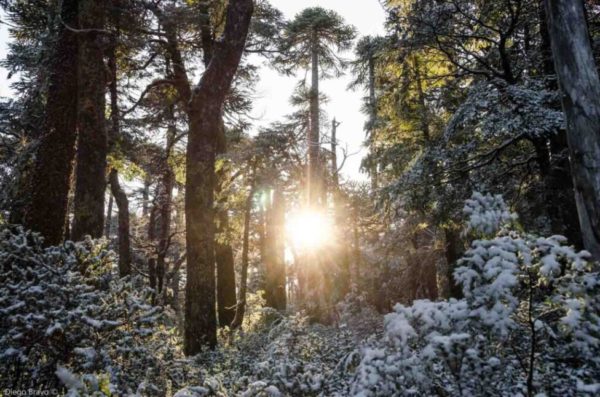
HAVANA TIMES – A truck is parked outside the offices of the Jose Luis Caniulef Mapuche community, in in the south of Chile. The truck belongs to the Southern Branch of the Anonymous Electricity Society (SAESA).
Two employees dressed in blue overalls install a box onto the wall. It isn’t the traditional apparatus used to measure electricity used in the facility, but rather a bidirectional meter, that measures energy injected into the distribution network.
“We’re producing electricity for the country now,” Alexis Catalan, the community president jokes.
The community is on the way to Licanray, less than a kilometer along the route that connects it to the Villarrica municipality in the La Araucania region, in southern Chile.
But before installing a renewable solar energy system with solar panels and the construction of the community headquarters, there was the land: a land title of 537 hectares, belonging to the Afunalhue community. The land was subdivided, the Jose Luis Caniulef community was born and its members were already planning the space that would be the future meeting spot for their meetings.
“It was used previously as a warehouse. Fertilizer was stored there,” the community secretary Antonio Caniulef Curimil recalls. “Now, this is the center, everything happens here,” he says about the place where assemblies are held twice a month, and also the club for the elderly operates.
Next to it, another one-story house operates as an office for meetings of entrepreneurial women, weavers, and behind, in addition to the ruka – traditional Mapuche housing -, are the stands for the cultural fair that takes place in the Summer season, one of the main sources of income for local residents.
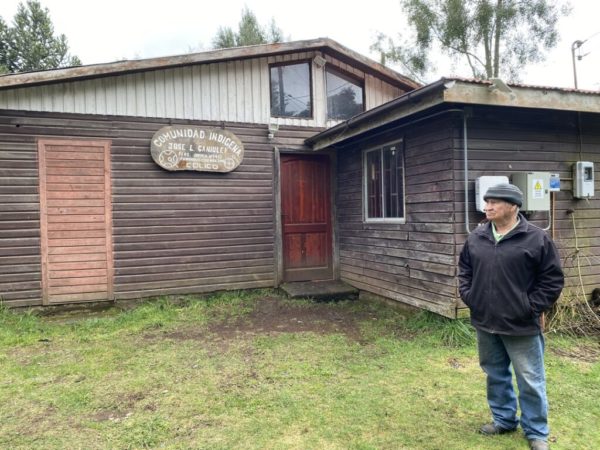
The area, also known as Araucania Lacustre, and has become one of the main tourist hotspots in Chile. According to the 2021 Tourism Services Index written up by the National Institute of Statistics, the area presented a 132.1% year-over-year growth in its activity.
The neighbors of the community are aware of the pros for the area and the high demand of visitors, but they are also aware of the expenses this business involves. One of them is the electricity bill when the cultural fair begins in the summer.
“Consumption soars. The community would pay out of its own pocket, and some members used to say: “Hey, why do we have to pay if we’re not going to fair?” Jessica Caniulef, the treasurer, says.
For residents within the community, electricity also has an impact when they plan the annual calendar. “We have activities all year long, so when the elderly come, when the Indigenous Territory Development Program comes, they occupy the space. This creates expenses and we mainly operate with contributions that come from members with their membership,” Catalan adds.
Orange summer
Conversations began two years ago, after the pandemic. The subject: regenerating land, family, economy, and culture. “This is where the idea for solar panels came from, because this gives us a certain autonomy,” Alexis Catalan says.
They applied for a fund from the Technical Cooperation Service, which depends on the Ministry of Economy, Development and Tourism.
That’s when the dilemma came: either opt for an off-grid model, where electricity generated doesn’t need to be connected to a network because it’s stored in batteries, or an on-grid model, that can be connected to a distribution network where users can generate and consume electricity.
If there is generation beyond consumption, a payment is made for every kilowatt per hour (kWh) recorded on the meter according to the Net Billing Law enacted in 2012.
“Batteries would mean needing a physical space that we don’t have. They last a certain number of years, I understand it’s 20 years, and they’re very expensive, you can spend 40% more of the project on the batteries,” Catalan says.
He says another reason they chose the on-grid system: “You might wonder if it’s that sustainable in the end. This is a conversation that needs to be had after. Where the solar panels are coming from or the lithium for those who have batteries. So, what might be sustainable for us, isn’t for communities in the north and this brings other problems.”
They paid their last electricity bill in November 2022. The bill that was around 150,000 Chilean pesos in summer, it went down to zero, thanks to the solar panel system that is installed on the headquarter’s roof, where five kilowatts per hour (kWh) are produced per month.
The community consumes less than this and Catalan says that now, with the meter installed, they hope that the Sociedad Austral de Electricidad Sociedad Anonima payment comes through for this electricity injection. “Cultural fairs normally last a week. This year, they lasted a whole month. Water depends on having a pump, bathrooms, electricity appliances used for cooking, so this is a significant expense and people organizing the event are paying the cost.”
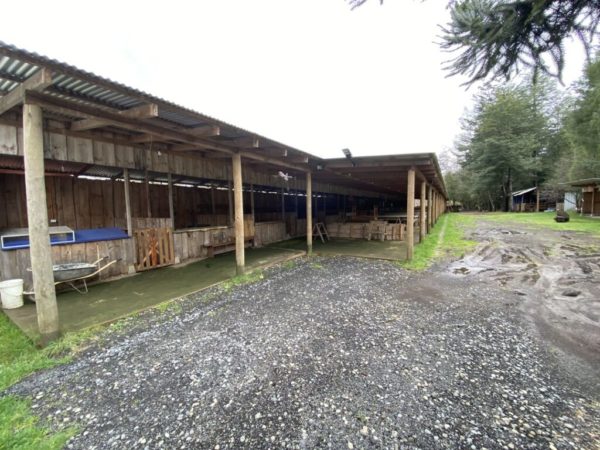
The community president adds: “We’re in a place that isn’t so close to the highway, so access isn’t so easy. We have to invest in publicity, raw materials, expenses, we have to pay for the license. All of this comes out of families’ pockets. So this system is direct support that reduces one of the greater costs, that has to do with electricity. It is also an effort to have an eco-friendly proposal, which is what matters to us at the end of the day.”
Doris Saez Hueichapan is a professor at the Department of Electrical Engineering at Universidad de Chile and director of the Indigenous Peoples Program at Universidad de Chile.
The academic has worked on renewable energy projects with Mapuche communities in the Araucania region, and says that there is growing interest in this kind of sustainable project.
“The subject of autonomy is interesting, on the one hand. On the other hand, becoming independent in electricity generation and paying bills. But they also want to develop agricultural productivity, water pumps consume a lot of electricity, so solar energy is very interesting for them,” she says.
Saez says that photovoltaic systems are preferred, although they are also using thermal power to heat up homes.
“There is hydroelectric power, which communities question a lot. Habits can also evolve depending on their needs, but water is a sacred issue, that’s why hydroelectric projects haven’t been approved, because they flood sectors that are sacred and have spiritual meaning,” the expert adds.
Turning on the lights
It cost approximately 12 million pesos to install the solar panel system in the Jose Luis Caniulef community. But expanding this system to homes isn’t an option, for now.
“Solar panels are impossible for families with little means. We’re talking about country life, ageing, people who sustain themselves, with agricultural or cattle-ranching livelihoods. But it makes sense in a community center space, which is constantly being used,” Catalan notes.
In fact, according to the National Socio-Economic Characterization Survey, in 2022, La Araucania was the second poorest region in Chile with the poverty standing at 11.6%.
Solar energy excused them of electricity expenses, but it couldn’t keep up with the high demand from electric ovens, microwaves and boilers that are used during the fair. Cuts came with this overload on the system.
“We still have a limit because the system gives us so many watts. With too high demand, the meter cuts off the power because the system isn’t complete. That’s why we say we’re looking at a three-phase system. You can have infinite high-amp connections and there wouldn’t be any problems. But that requires investment on another level. We’re talking about industrial capacity,” the community president adds.
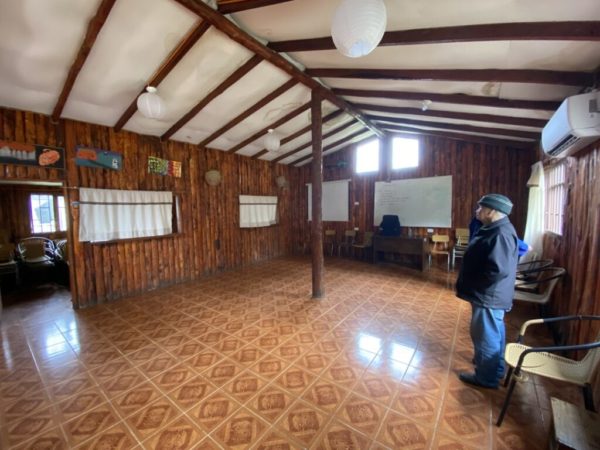
Saez also explains financial details when choosing an on-grid system. “You’re selling for less, this has an impact because you’re selling it for the same price you’re buying it. The process is also a little longer to manage this. Not any old generator can inject electricity into the system, they have to meet certain quality standards,” she explains.
Catalan says that human capital can also agree on when it’s time to innovate. “It requires hard and super technical work, lauching a project like this one means knowing how to make a proposal, answer certain questions that community leaders also don’t know how to answer, social leaderships are in crisis. Lots of people are at a job and they don’t have anyone to take over after them,” he says.
Saez agrees on this lack of training: “Designing where to install the panels with them, what kind of consumption is important, so they can become empowered with the system and then maintain it. This is the great problem with projects, that they haven’t been developed with communities actively taking part.”
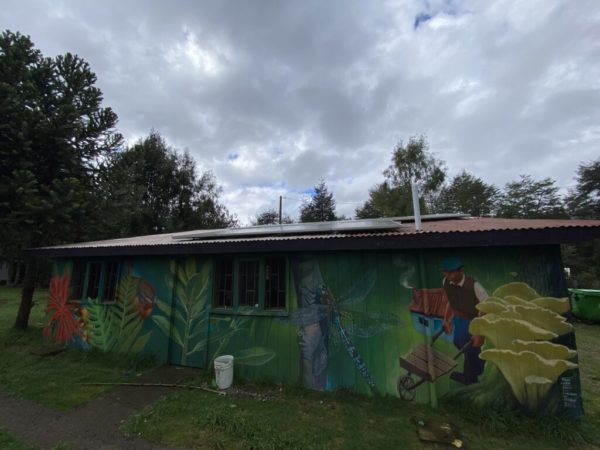
The community has already specified what they will do when money comes from surplus energy.
“We have elderly people living alone, or when there are deaths and births, we can contribute with direct grants to families and this is something we’re interested in,” Catalan says, who adds that the economic aspect isn’t the only thing motivating neighbors.
“We made a documentary of the land where the project took place. We’re working on a more complete regeneration project. We’re working with schools, we want “to encourage” a reforestation plan and what we’re doing with solar panels, and reduced electricity costs, is just a needle in this big haystack,” he adds.
A map with drawings of pumas, kodkods, the Calafquen lake and wild flowers hanging on one of the headquarters’ walls. A few meters away is the air-conditioning unit, the system that replaced wood-burning heating that was used in the past, and which they no longer have to pay for.
According to a study by the Forestry Institute in 2020, the Araucania Region had an average consumption of 9.2 m3 per household, with a price of a bag costing 4000 pesos (4.8 USD) accoding to the National Consumer Service.
Antonio Caniulef recalls that organizations that used the space had to bring their own logs for heating. “The situation is different now. Before, we lived with wood. We don’t use it anymore. People have other ways to live now.” So, you have to keep up with breakthroughs,” he concludes.
This article was written with the support of Climate Tracker Latin America and the Open Society Foundation (OSF).





